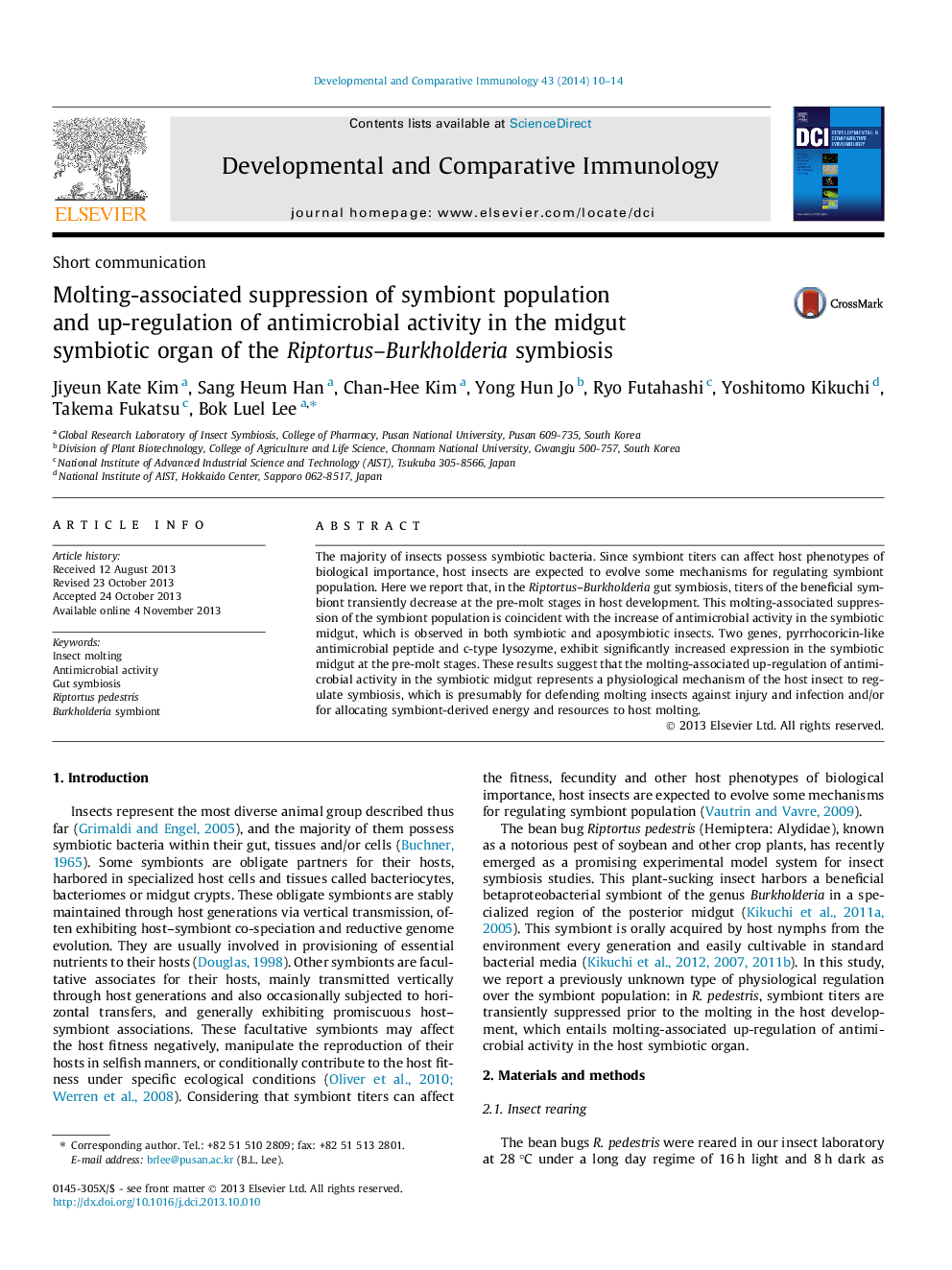| Article ID | Journal | Published Year | Pages | File Type |
|---|---|---|---|---|
| 10971439 | Developmental & Comparative Immunology | 2014 | 5 Pages |
Abstract
The majority of insects possess symbiotic bacteria. Since symbiont titers can affect host phenotypes of biological importance, host insects are expected to evolve some mechanisms for regulating symbiont population. Here we report that, in the Riptortus-Burkholderia gut symbiosis, titers of the beneficial symbiont transiently decrease at the pre-molt stages in host development. This molting-associated suppression of the symbiont population is coincident with the increase of antimicrobial activity in the symbiotic midgut, which is observed in both symbiotic and aposymbiotic insects. Two genes, pyrrhocoricin-like antimicrobial peptide and c-type lysozyme, exhibit significantly increased expression in the symbiotic midgut at the pre-molt stages. These results suggest that the molting-associated up-regulation of antimicrobial activity in the symbiotic midgut represents a physiological mechanism of the host insect to regulate symbiosis, which is presumably for defending molting insects against injury and infection and/or for allocating symbiont-derived energy and resources to host molting.
Related Topics
Life Sciences
Biochemistry, Genetics and Molecular Biology
Developmental Biology
Authors
Jiyeun Kate Kim, Sang Heum Han, Chan-Hee Kim, Yong Hun Jo, Ryo Futahashi, Yoshitomo Kikuchi, Takema Fukatsu, Bok Luel Lee,
